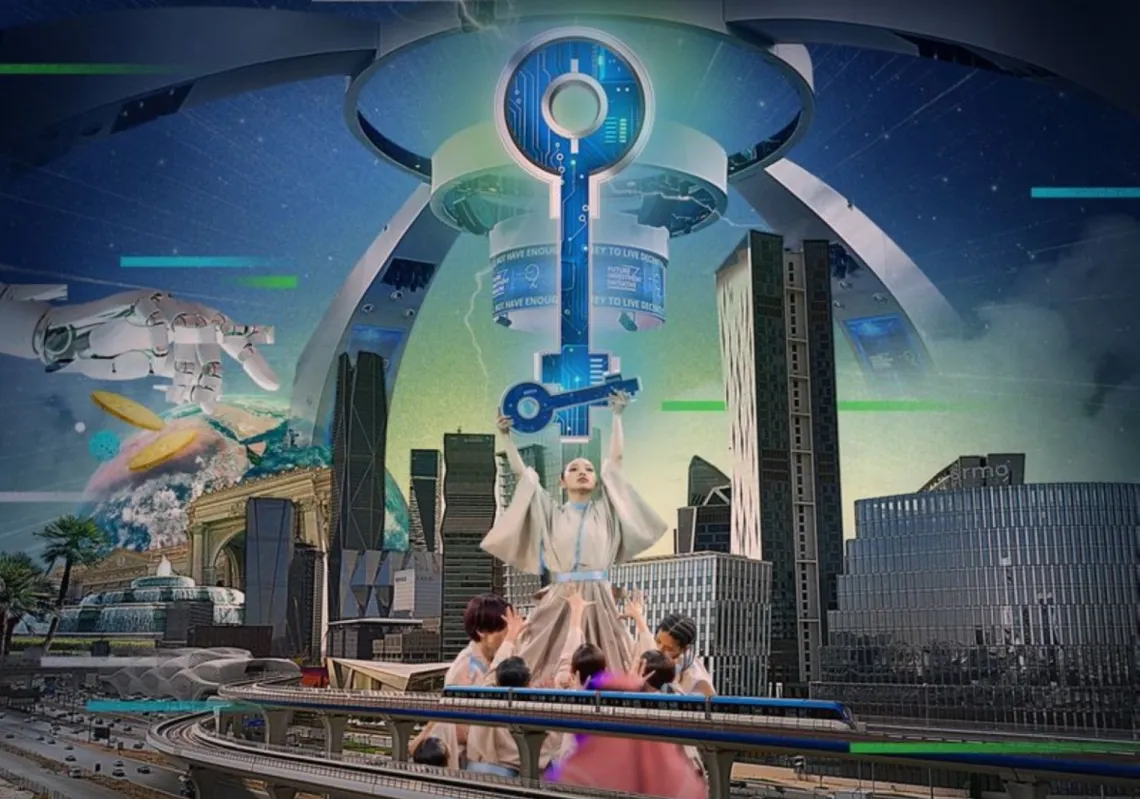 Flags outside the United Nations (UN) Office as the fourth round of the intra-Syrian talks begin in Geneva, Switzerland on February 23, 2017. (Getty Images)[/caption]
Flags outside the United Nations (UN) Office as the fourth round of the intra-Syrian talks begin in Geneva, Switzerland on February 23, 2017. (Getty Images)[/caption]
By Rebecca Friedman Lissner, Mira Rapp-Hooper
Eighteen months into U.S. President Donald Trump’s administration, domestic and foreign policy analysts alike are in the midst of a bitter awakening: U.S. policy, whether social, economic, or international, may never be the same again. Among the most common refrains from the foreign policy cognoscenti is the warning that Trump has imperiled the liberal international order—the norms, rules, laws, and institutions that have supported U.S. power since 1945. The president’s vengeful unilateralism, we are told, is dismantling a cherished system that has brought peace and stability to the world.
In his recent Foreign Affairs article (“The Myth of the Liberal Order,” July/August 2018), Graham Allison provides a useful corrective to this baleful narrative, joining a chorus of contrarian foreign policy thinkers who decry the “myth of the liberal order.” Defenders of the myth, Allison argues, mistakenly credit the liberal order with 70 years of great power peace and misattribute the motivations behind U.S. overseas engagement. The post–World War II system led by the United States was never fully liberal, international, rules based, or orderly. At its core, it was driven by a struggle for global dominance between the United States and the Soviet Union. It was the balance of power between these two nuclear behemoths—and U.S. hegemony in more recent decades—that prevented another world war. For Allison, Trump’s disregard for liberal values may be worrisome, but rather than dreaming of a bygone era of unrivaled liberal hegemony, the United States should focus on rebuilding a robust democracy at home.
Although a welcome antidote to the many reverent paeans to the liberal international order and attendant calls for its pristine preservation, Allison’s critique does not fully rhyme with his conclusions. Liberal order may not have been the sole determinant of 70 years of geopolitics, but that does not warrant a wholesale dismissal of the concept as a matter of statecraft or scholarship. And although a restoration of the same liberal system propped up by an indispensable United States is a fantasy, U.S. grand strategy should not discard altogether the notion of international order, even if the world becomes more multipolar and the United States focuses on the defense of democracy at home.
MORE THAN A MYTH
Critics of the liberal international order are right to draw attention to this often praised but rarely scrutinized concept. Far from a single crystalline structure with ubiquitous reach, the post–World War II order emerged and evolved gradually over the course of the twentieth century. It was initially created as a largely Western project designed for postwar rehabilitation and flourished during the Cold War. It diffused into Asia, Africa, and Latin America following decolonization, cracked and listed during the economic stagnation of the 1970s, and claimed universalism only with its competitors’ demise in the 1990s. To obscure this often disjointed, 70-plus-year evolution by appealing to some monolithic ideal does little justice to the liberal order’s complex history. Yet this labyrinthine trajectory does not obviate the notion of liberal order writ large, whether as an analytic construct or as a grand strategic goal.
Granted, the phrase “liberal international order” has always been shorthand for U.S. global leadership—a structure sustained by American power in service of largely Western preferences. As the most powerful state in the system, the United States has disproportionately shaped its rules while reserving the right to periodically flout them. But acknowledging this relationship does not imply that the international liberal system order is purely a reflection of raw power. Even as the U.S.-Soviet Cold War rivalry emerged from bipolarity, the United States’ embrace of liberal internationalism guided its approach to international institutions and structured cooperation within the Western bloc. Unrivaled in the unipolar moment, U.S. grand strategy has been more remarkable for its restraint than its unfettered exercise of coercive power, despite a slew of regrettable excesses.
Indeed, the concept of international order is relevant even in a hard power world precisely because it is not reducible to unilateral U.S. interests or to the global distribution of military and economic might. Rather, it emerged and endured through many states’ collective efforts. Where rules are institutionalized in organizations or legal regimes, they reflect painstaking diplomatic efforts to identify convergent interests and codify standards of state behavior. Where rules develop organically, in norms or customary law, they reflect decades of strategic interaction, during which repeated patterns of conflict and cooperation have generated predictability. By design, the U.S.-led liberal system incorporated such attributes. As a result, it offered both stability and considerable political, economic, and security gains to other states.
When Canadian Prime Minister Justin Trudeau, German Chancellor Angela Merkel, Japanese Premier Shinzo Abe, and other U.S. allies invoke the beleaguered liberal order today, it is because they want to preserve those advantages. Far from dismissing the order as a mere euphemism for U.S. hegemony, they see their own national interests at stake in it. They also recognize that those interests cannot be protected without a powerful—and committed—United States. Even China, the order’s most formidable challenger-in-waiting, finds value in selectively embracing its tenets.
[caption id="attachment_55257214" align="aligncenter" width="594"]
 US President Donald Trump (4th L) and Japanese Prime Minister Shinzo Abe (not seen) hold an inter-delegation meeting at Akasaka Palace in Tokyo, Japan on November 6, 2017. (Getty Images)[/caption]
US President Donald Trump (4th L) and Japanese Prime Minister Shinzo Abe (not seen) hold an inter-delegation meeting at Akasaka Palace in Tokyo, Japan on November 6, 2017. (Getty Images)[/caption]
THE COMING ENTROPY?
The liberal international order is a useful frame for understanding the contours and endurance of U.S. grand strategy over the past 70 years, but it will not persist immutably for another seven decades. Never having achieved the universal acceptance to which post–Cold War triumphalists aspired, the present order is threatened by adverse shifts in the balance of power: China is revisionist in its ascent, and Russia is revanchist in its decline. Global influence is shifting eastward, pushing the United States and Europe into second place.
The formal and informal arrangements that govern interstate interaction—which is to say, the international order—must adapt to this new reality if it is to avoid abject decay. But changing power balances alone do not make the order’s demise a foregone conclusion. For the next several decades, the United States will still remain the world’s most powerful state in military, economic, and diplomatic terms. No other country will have the same capacity to shape international order, even as Washington will wield its authority on fundamentally different terms. Put differently, the twilight of the unipolar moment is not the same as the end of U.S. global leadership or preeminence. Given this, how the United States adapts its grand strategy to domestic turmoil and considerable flux abroad will matter a great deal for the future of global order.
Other states, chief among them China, will cement their own power in regional and global rules and institutions. This trend is well under way, and some aspects of it are nonthreatening, such as when Beijing requests a greater voting share at the International Monetary Fund. Elsewhere, however, Beijing is fashioning new institutions governed by rules that are decidedly illiberal, as with its Belt and Road Initiative. It would be a grave mistake for the United States to abandon the idea of international order as an empty grand strategic ambition and settle for regional influence over its own neighbourhood. Spheres of influence are a form of balance-of-power order but have historically been a fundamentally less stable one and would certainly degrade U.S. security and prosperity.
Instead of letting rivals carve out spheres of influence, the United States needs a novel grand strategic vision that rejects both radical retreat and creativity-numbing nostalgia. Any new approach must account for rapidly shifting power relations and technological change. It should also reflect more critically on the universalist ambitions of post–Cold War U.S. grand strategy and may require a greater tolerance for regime diversity than liberal triumphalists could have possibly imagined at the apex of U.S. power.
For the United States to lead abroad, it must also confront the dysfunction that is hollowing out support for internationalism at home. As we have argued, and as Allison rightly points out, Trump may be more avatar than architect of the United States’ domestic unraveling. To be sure, Trump’s transactional and visceral approach to foreign policy is itself wreaking havoc on the predictability underlying the postwar order and will require global recompense of epochal proportions from any new leader. But we cannot assess the extent or endurance of his destructiveness just 18 months into his term.
What we do know is that Trump’s victory was not an isolated political shock—a fact that many analysts miss by fixating on Trump’s heterodox administration and anticipating his eventual exit. In some ways, Trump’s policies are merely a modern projection of old impulses, most notably the deep unilateralism of the Jacksonian school of foreign policy. Trump’s contemporary version, however, rests on populist and nativist impulses activated in part by socioeconomic dislocation that will only intensify. Automation and the changing nature of work, inequality, political and media polarization, and demographic changes are likely to intersect with an increasingly turbulent international environment, making it more difficult still to articulate a coherent foreign policy built around age-old liberal values and institutions. These domestic undercurrents must be faced squarely—not only for the sake of restoring a sustainable U.S. social compact but in order to build a consensus on the United States’ role in the world.
NEW ORDER
Less than halfway through Trump’s first term, the U.S. foreign policy establishment, cut off from the levers of power, watches on in a state of shock as the country stumbles from one international indignity to another. But the domestic and international forces that carried Trump to power will accelerate with his presidency and outlast his tenure. The United States, in other words, is only just commencing a strategic reckoning, the likes of which it has not undertaken since the years immediately following World War II. In the new strategic environment, the old liberal order built on unrivaled U.S. power will no doubt prove obsolete and untenable. But that should not imply giving up on the system altogether—particularly since it has advanced U.S. interests at a lower cost than any known alternative. As in previous eras, the United States’ global power position will condition, but not predetermine, Washington’s strategic choices. In this process of reorientation, domestic renewal and international restoration are not, as Allison suggests, mutually exclusive. In fact, they are complements, and any serious reevaluation of U.S. strategy must address them simultaneously.
The liberal international order may be less foundational than often argued, but it serves more than just narrative purposes. In its hour of duress, a new vision for U.S. strategy must assess threats and advantages at home and abroad and adapt the institutions that have been the foundation of American power. If successful, the United States will navigate an epoch of disruptive change, both domestic and international, in a manner that is peaceful and redounds to U.S. interests. It is a formidable task to be sure, but this moment demands no less.
This article was originally published on ForeignAffairs.com.








